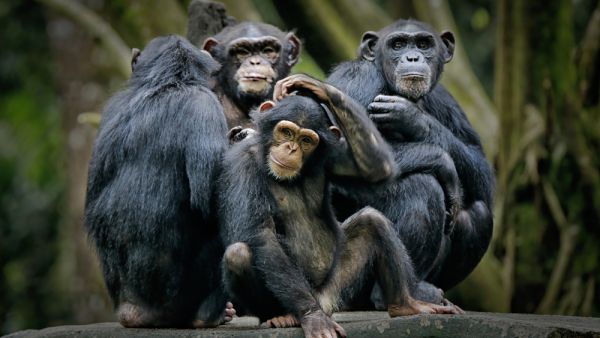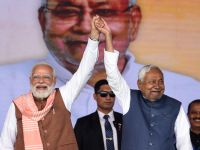A ground-breaking study has revealed that members of the great apes, such as bonobos, chimps and orangutans, have a theory of mind.
This, researchers say, proves they can understand others' mental states — an ability previously though exclusively reserved to humans.
The idea other animals possess this trait has been debated for decades and researchers at Kyoto University think they have proved its existence.
The study, published in the journal PNAS, assessed chimpanzees, bonobos and orangutans — our closest relatives.
It found that they rely on self-experience to anticipate others' actions.
Study author Dr Fumihiro Kano, a primate psychologist at Kyoto University in Japan, said: 'The results suggest we share this ability with our evolutionary cousins.'
Theory of mind is the ability to attribute mental states — such as beliefs, intents, desires, emotions and knowledge — to oneself and others.
This capacity is crucial for everyday social interactions and has found to be lacking in those with autism, schizophrenia and attention deficit hyperactivity disorder.
The researchers used eye-tracking technology to monitor the gaze of apes exposed to various pranks carried out by an actor dressed in a King Kong suit.
{"preview_thumbnail":"https://cdn.flowplayer.com/6684a05f-6468-4ecd-87d5-a748773282a3/i/v-i-0…","video_id":"0795bcf0-1f76-4c2d-ace5-aa40232e65fa","player_id":"8ca46225-42a2-4245-9c20-7850ae937431","provider":"flowplayer","video":"Syrian Regime Approves Return of New Wave of Refugees"}
The apes were shown a film which they found exciting and the eye-tracking was used to record gaze patterns indicating anticipation of an agent's behaviour.
They could tell if the individual was making a mistake and anticipate the agents' actions.
This held true even when that individual had a false belief about reality — one of the strongest pieces of evidence that they read their mind.
Dr Kano said: 'For close evolutionary relatives, you could say we look somewhat similar.
'And the more we learn about our great ape cousins, the more we find that we're alike.'
Researchers then expanded the study to look at how the apes dealt with a complex test of their cognitive ability.
They conducted a so-called 'trick blindfold test', which involved putting apes on one side of two barriers.
One group was put in front of a 'true' barrier, made of an opaque material.
The other was given a 'trick' one which appears to be opaque from a distance but becomes transparent up close.
Both groups of apes then watched the same video where a person hides behind the barrier while another object moves in front of it.
This barrier is identical in appearance to the ones experienced by the apes.
It gave the apes the mental quandary to predict where the person would go.
The team observed that, with the opaque barrier, the apes anticipated that the agent would go to the location that the agent had last seen.
Conversely, with the trick barrier, the apes anticipated that the agent would go to neither location, because the object had been removed entirely.
The apes were able to make the correct inference — ruling out a purely behavioural explanation.
The two groups anticipated the behaviour based on their own experiences with the barriers — even when both had observed the individual acting in an identical manner.
Dr Kano said: 'We are excited to find great apes actually passed this difficult test.'
'We plan to continue refining our methods to test further non-mentalistic alternatives to the theory of mind in nonhuman animals.'
This article has been adapted from its original source.








